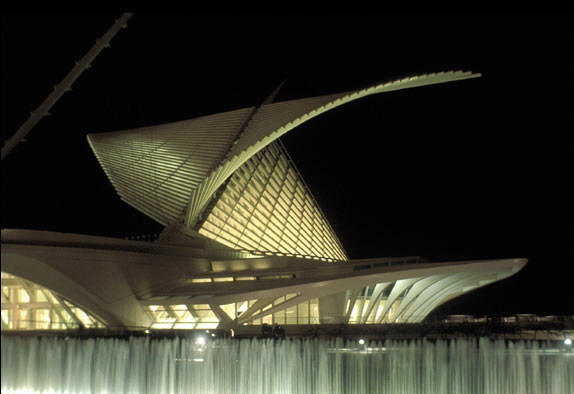 ArchitectureThe place concrete roof as "el paraguas known.
ArchitectureThe place concrete roof as "el paraguas known.Designed in 1963 by Pedro Ramírez Vázquez, Jorge Rafael Mijares and Campuzano, it has an impressive architecture with the exhibition halls around a courtyard with a large pond and a vast square concrete umbrella of a single slender column (known as "El paraguas," Spanish support for "The Umbrella") to the splashes an artificial cascade. The halls are surrounded by gardens, many of which include outdoor exhibits. The museum has 23 rooms for exhibitions and covers an area of 79 700 square meters (nearly 8 ha) or 857 890 square feet (nearly 20 hectares).
Exhibits
Opened in 1964 by President Adolfo López Mateos, the museum has a number of important exhibitions, such as the Stone of the Sun (pictured right) has, giant stone heads of Olmec civilization, which were found in the jungles of Tabasco and Veracruz, treasures again from the Mayan civilization, the sacred cenote at Chichen Itza, a replica of the cover by Pascal sarcophagal grave in Palenque and ethnological shows of contemporary Mexican rural life. It also has a model of the location and layout of the former Aztec capital of Tenochtitlan, the place now occupied by the central portion of today's Mexico City itself.
The museum also visit exhibitions, most of which focus on other of the world's great cultures. Past exhibits have focused on ancient Iran, Greece, China, Egypt, Russia, and Spain.
Name
Original Aztec Stone of the Sun on the display in the museum.
It is a common misconception, even among Mexicans that the museum is the full name of the National Museum of Anthropology and History. Its official name is simply the National Museum of Anthropology. There is another body, the National Museum of History, located in the nearby Castle of Chapultepec, but it is a very different museum. The former focuses on the pre-Columbian Mexico and Mexico's modern ethnography. The latter focuses on the Viceroyalty of New Spain and its progress in terms of modern Mexico, until 20 Century.
However, the official administrative body, that both museums (and many other national and regional museums) directs the National Institute of Anthropology and History (Instituto Nacional de Antropología e Historia).

No comments:
Post a Comment